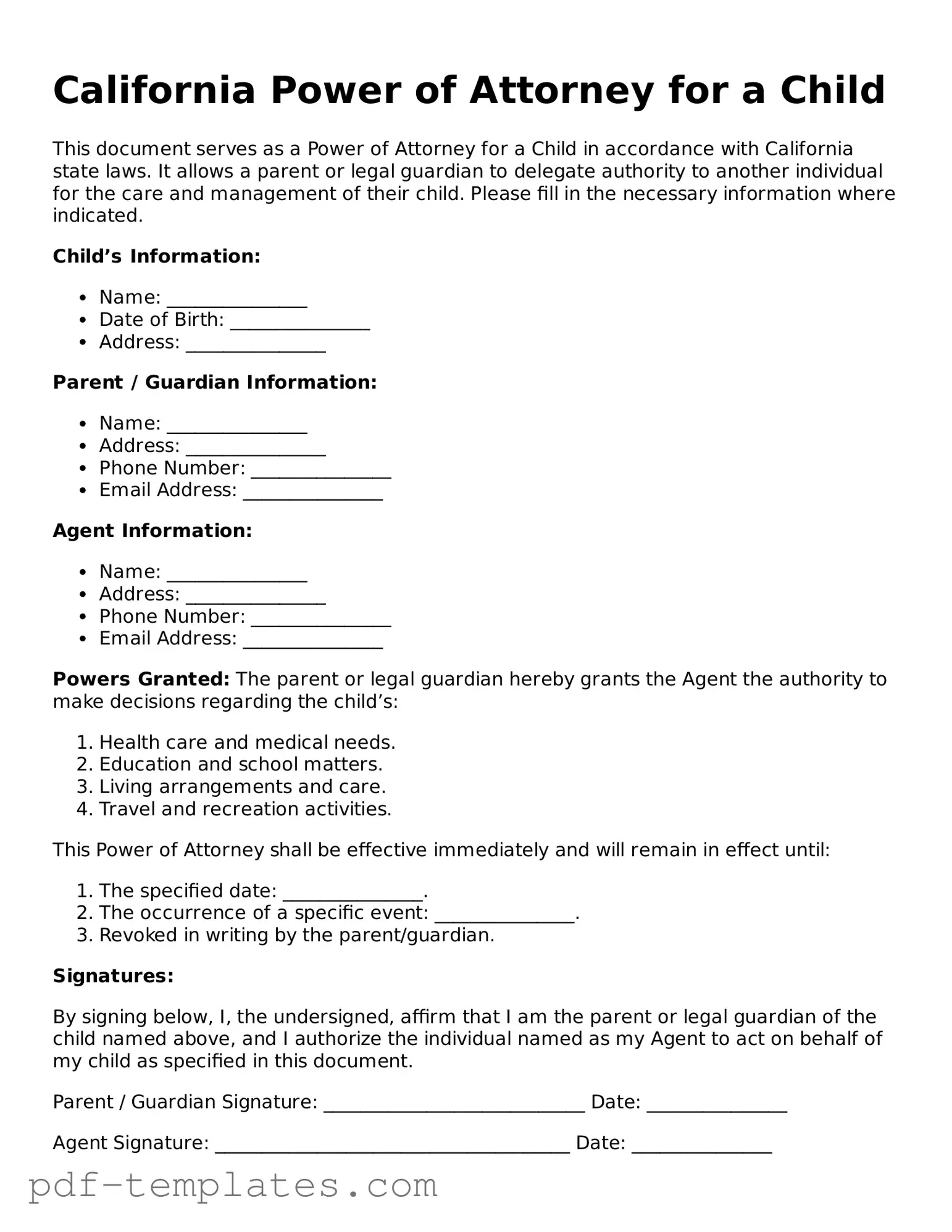The California Power of Attorney for a Child form is similar to the General Power of Attorney. Both documents allow an individual to appoint someone else to make decisions on their behalf. However, the General Power of Attorney covers a broader range of decisions, including financial and legal matters, while the Power of Attorney for a Child specifically focuses on the care and custody of a minor. This makes it particularly important for parents or guardians who need to designate someone to take care of their children in their absence, such as during travel or emergencies.
Another document that shares similarities is the Medical Power of Attorney. Like the Power of Attorney for a Child, this document allows an individual to designate someone to make healthcare decisions on their behalf. In the case of a child, the Power of Attorney for a Child can include medical decisions, ensuring that the appointed individual can make critical healthcare choices if the parent or guardian is unavailable. This specificity is crucial for ensuring that a child receives appropriate medical care when needed.
For landlords and tenants in Texas, the Room Rental Agreement form template is a valuable resource that clarifies the obligations and expectations involved in renting a room within a residential property. Utilizing this form helps ensure that both parties have a clear understanding of rental terms, promoting a smooth rental experience.
The Child Custody Agreement also bears resemblance to the Power of Attorney for a Child. Both documents address the care and custody of a child, but they serve different purposes. A Child Custody Agreement is typically a legal arrangement established during divorce or separation proceedings, outlining where the child will live and how decisions will be made. In contrast, the Power of Attorney for a Child is a more temporary arrangement that allows a designated individual to act in place of the parent or guardian for a specific period or situation.
Lastly, the Temporary Guardianship Agreement is another document that aligns closely with the Power of Attorney for a Child. Both documents grant authority to another person to care for a child, but they differ in scope and duration. A Temporary Guardianship Agreement is often used when parents are unable to care for their child for an extended period, while the Power of Attorney for a Child is typically used for shorter durations or specific situations. Understanding these distinctions is essential for ensuring that the right document is used for the right circumstances.
